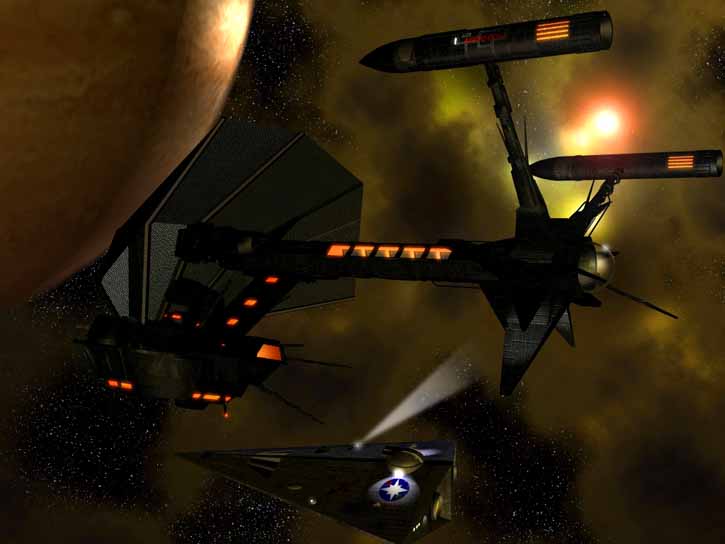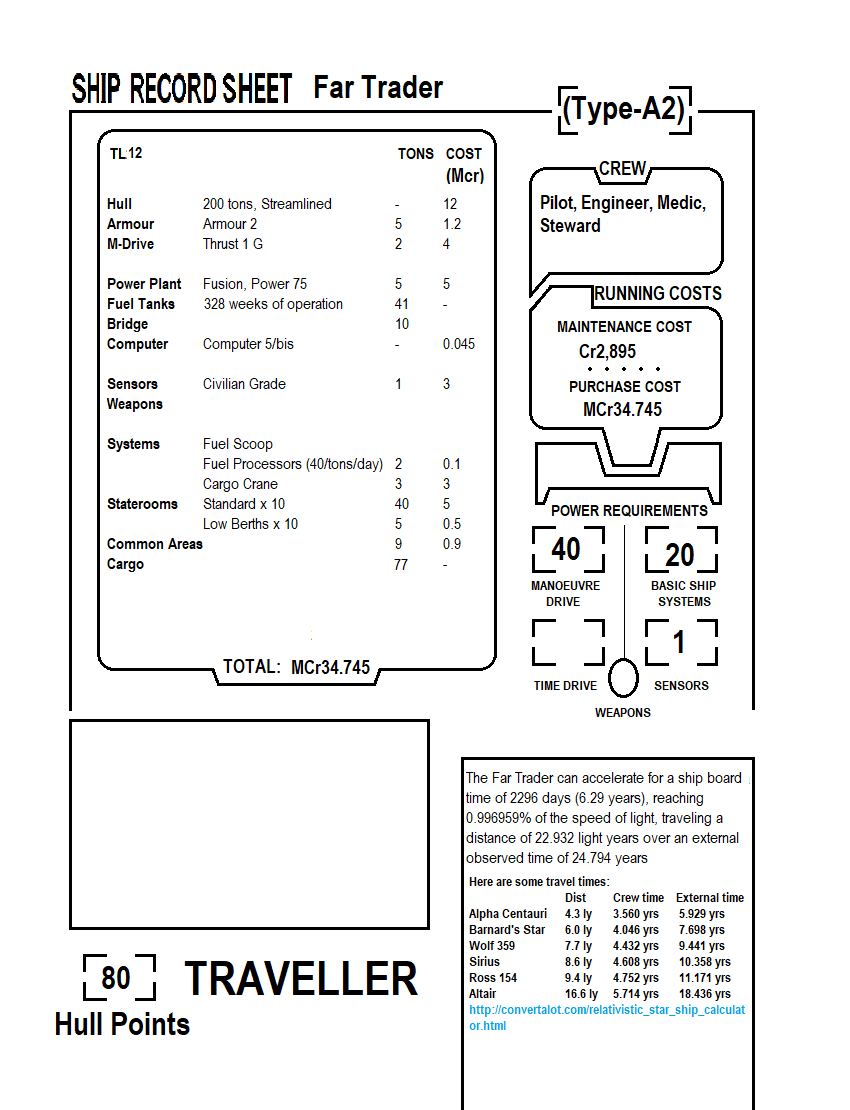Reynard
Emperor Mongoose
Back to the original topic.
" I don't know why the jump drive required fuel to do that and not just energy from the power plant, and why does the Maneuver drive require only an energy input, I would thing this arrangement would be the opposite. Why not?"
Depending on the Traveller version, the energy is either generated by the power plant and sent to the jump drive or the jump drive itself has the power conversion capacity. Either way fuel is needed to create energy to create a jump effect.
Again, there are different descriptions as to what the maneuver drive is but all have it as a reactionless event, no mass needed to create movement. Energy is used to create the field or force, whether gravitic and/or interaction with universal quantum forces, to push and pull. There is no hydrogen expelled out the back no matter what the imaginative illustrations show nor is the energy converted to ions or photons for thrust.
Mongoose is interesting that its system requires both power from a source outside the drive AND 'fuel' directly consumed by the drive itself. Just in case I missed it, is there an actual reference that this 'fuel' is used in the bubble? Is this fuel actually used as a really big energy burst needed to create the jump rift and the power plant energy is needed to power the drive's fuel to energy conversion? I think they created the power points game mechanic for 2e but still wanted to retain the classic jump drive fuel requirement. Hey, as long as the ship jumps.
" I don't know why the jump drive required fuel to do that and not just energy from the power plant, and why does the Maneuver drive require only an energy input, I would thing this arrangement would be the opposite. Why not?"
Depending on the Traveller version, the energy is either generated by the power plant and sent to the jump drive or the jump drive itself has the power conversion capacity. Either way fuel is needed to create energy to create a jump effect.
Again, there are different descriptions as to what the maneuver drive is but all have it as a reactionless event, no mass needed to create movement. Energy is used to create the field or force, whether gravitic and/or interaction with universal quantum forces, to push and pull. There is no hydrogen expelled out the back no matter what the imaginative illustrations show nor is the energy converted to ions or photons for thrust.
Mongoose is interesting that its system requires both power from a source outside the drive AND 'fuel' directly consumed by the drive itself. Just in case I missed it, is there an actual reference that this 'fuel' is used in the bubble? Is this fuel actually used as a really big energy burst needed to create the jump rift and the power plant energy is needed to power the drive's fuel to energy conversion? I think they created the power points game mechanic for 2e but still wanted to retain the classic jump drive fuel requirement. Hey, as long as the ship jumps.


